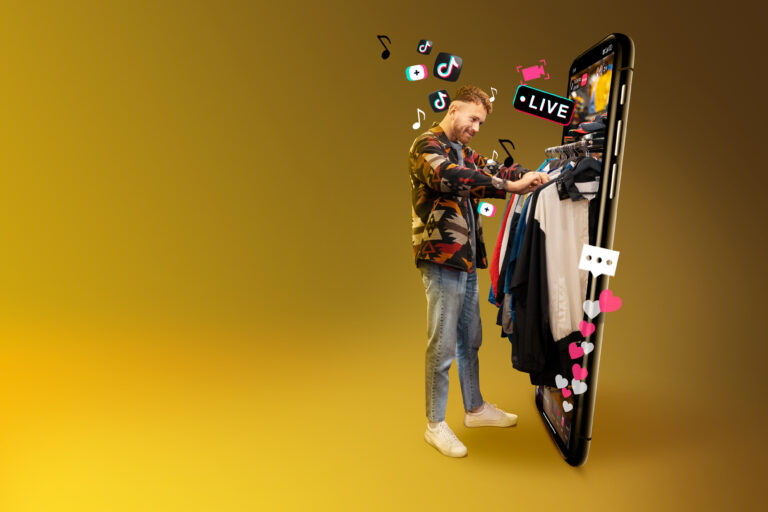There are many success stories in digital marketing, some we’ve heard of and others we haven’t. Whether you’re starting your business or a professional in digital marketing, it’s important to continue developing your skills. One great way to do this is by listening to and reading success stories of entrepreneurs and other companies.
Successful marketing is about understanding your customers’ needs and fulfilling them in your own unique way. The more different you are, the more successful you can be, like the success story of Kit Kat in Japan and the story of Intel, which succeeded with different and unconventional ideas that completely changed their projects.
Here are some of the best success stories in e-commerce in the field of digital marketing, which will provide you with valuable and essential information about the available strategies, the latest tactics that have been tried and tested, and what the results were.
Successful companies in digital marketing
1.Success story of Kit Kat in Japan
The Japanese people are among those who do not trust marketing or advertising much. This was a challenge for the chocolate company Kit Kat to succeed and spread in Japan. It so happened that the word “Kit Kat” is very close to a Japanese word “kitto katsu,” which means “to surely win.” This is where Kit Kat’s indirect and patient plan began to spread in Japan. In the first year of Kit Kat’s release in Japan, hotels started distributing the chocolate to students without the Japanese people knowing they were gifts from Kit Kat itself. In the second and third years, the company began leaking stories and news about cute tales of mothers and students with a luck charm. All these stories began to settle in the minds of mothers in Japan that Kit Kat indeed brings luck. They started sending their children to exams with the chocolates for free, as if it were a magical charm. Because the Japanese people like uniqueness and difference, the company started producing many flavors exclusively for Japan, but for a limited time, and then they disappear from the market to release other flavors in their place. To date, Kit Kat has successfully produced about 200 flavors for the Japanese market.
2.Strange success story of Burger King
In 2009, Burger King decided to run an advertisement campaign on Facebook. The peculiarity of the campaign lies in its name, as it was called “The Sacrifice Sandwich Campaign,” featuring the famous Whopper sandwich. Some might imagine it as sacrificing a sandwich, but the campaign involved downloading an app from Facebook that works to remove 10 of your Facebook friends to get a coupon for a free Whopper sandwich! In addition, your friends are informed that they have been “sacrificed”! The campaign was unprecedentedly successful. Over 200,000 users sacrificed their friends to get a sandwich worth about 40 cents. Facebook objected to the application because it violated privacy agreements by notifying users of friend removal operations. Burger King was not remorseful about this trick, but it never planned to revive the application on any social media platform.
3.Success Story of Pizza Hut Perfume
It all began in August 2011, when the social media management team at the advertising agency overseeing Pizza Hut’s website in Canada posted on the chain’s Facebook page about a virtual perfume scent, for some fun engagement with fans on the company’s Facebook page and social media platforms.
Nearly 2,000 people engaged with the post, either by opening the image, clicking “Like,” sharing it on their own pages, or leaving comments.
The agency saw a significant opportunity and decided to create a pizza-scented perfume.
4.Intel Corporation
When Intel was in its early days, it adopted a simple approach to electronic marketing via mobile phones. They didn’t design flashy ads to fill the internet, nor did they invent anything groundbreaking.
They launched a paid campaign on search engines to support their brand “Meet the Processors”.
By focusing on keywords used by their audience to drive traffic to their website, they provided educational content about their new processors’ features. Interestingly, Intel didn’t focus on the Google search engine but directed all their marketing efforts toward Bing search engine because it was 40% more efficient on mobile phones than Google.
5.Chipotle
Among the success stories of electronic marketing deemed one of the best marketing campaigns in history is Chipotle, a fast-food restaurant that revolutionized the food industry through its “Food With Integrity” initiative, a commitment to using environmentally friendly ingredients.
To promote this initiative, the company produced an animated film and posted it on YouTube. Additionally, they developed a game specifically for this initiative, and in less than two weeks, the film garnered over 6.5 million views, and the game was ranked among the top 15 iPhone games.
Experts attribute the success of this campaign to the high-quality game and its lack of annoying advertisements. It was purely a game for users and not a marketing gimmick.
6.Starbucks’ Experience in Electronic Marketing
As the mobile phone revolution expanded, Starbucks seized the opportunity to facilitate coffee purchases and make them as fast as possible. Every Starbucks branch began accepting payments via mobile phones through the Starbucks app, allowing customers to install and load it on their phones.
During a purchase, the customer scans the code displayed on the screen, and the amount is deducted. After three months, the app gained immense popularity and acquired over 3 million users.
Here, the process of acquiring coffee was made easier, giving the company and the app a competitive edge. The presence of the app on customers’ phones would encourage them to visit the café again. Additionally, the Starbucks brand would be present most of the time whenever customers opened their phones and looked at the app list.
7.McDonald’s and Electronic Marketing Successes
McDonald’s utilized Instagram optimally and is among the successful companies in electronic marketing. In 2013, McDonald’s launched a contest or promotion encouraging customers to take pictures of their favorite meals and share them on Instagram, contributing to McDonald’s spread among Instagram users.
This isn’t the first time McDonald’s has offered a successful marketing experience. When promoting their famous Monopoly offer, they used paid advertisements to increase customer awareness of the promotional offer. They also shared some news about their new product, Fish McBites.
8.TED
TED is a company that has achieved successes in electronic marketing, hosting a global conference featuring a group of experts, authors, and other influential leaders who give lectures on constructive and motivating ideas. TED has achieved great success, reaching everyone, with over 19 million subscribers on their YouTube channel.
Their videos always garner millions of views because they focus on creating valuable content worthy of sharing and spreading among people. They host the best speakers who have engaging ideas and inspiring innovations, such as Elon Musk, Tim Urban, and many others.
In addition, they don’t focus on improving search engines; they only provide valuable content embodying the importance of content in improving brand spread and fame. One of the reasons for their success is also their utilization of visual content instead of the blogging that was common at that time.
9.Canva
When the design giant Canva was launched in 2012, it was a small company. Now its value exceeds $2.5 billion, with over 15 million users enabling the creation of designs like infographics, blog images, and charts for free use in electronic marketing.
If you want more features, you have to subscribe for a fee. A successful marketing story may not require marketing efforts, just attention to the product and service quality, and that’s what Canva did. It didn’t even need marketing.
It also served as a cheaper alternative for project owners. Instead of hiring a graphic designer, business owners could create designs themselves at a lower cost.




